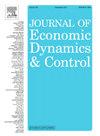妇女就业新生命周期的定量理论
IF 2.3
3区 经济学
Q2 ECONOMICS
引用次数: 0
摘要
“女性参与劳动力的新生命周期已经出现”(Goldin and Mitchell, 2017)。与之前的人群相比,美国上世纪50年代中期以后出生的受过大学教育的已婚女性的就业状况更平坦、更高,没有驼峰,但在30-39岁之间出现了中间下降。与此同时,这些年轻人群推迟了生育,但他们的完整生育率有所提高。我发展了一个定量理论来解释受过大学教育的女性在就业和生育决策方面的变化。首先,我提供了生育率和就业决策之间正相关关系的简化证据。其次,我建立了劳动力供给和生育决策的生命周期模型。我的估计表明,受过大学教育的已婚妇女的经验边际收益增加了33%。虽然在职经验积累在产生就业转移和生育延迟方面起着至关重要的作用,但在缺乏不孕症治疗的情况下,该模型并没有产生总生育率的增加。因此,要理解为什么受过大学教育的已婚女性的生命周期就业状况和生育决定正在发生变化,这两个因素都必须考虑。本文章由计算机程序翻译,如有差异,请以英文原文为准。
A quantitative theory of the new life cycle of women's employment
“A new life cycle of women's labor force participation has emerged” (Goldin and Mitchell, 2017). Compared to previous cohorts, the employment profile of American college-educated married women born after the mid-1950s is flatter and higher with no hump but with a dip in the middle between ages 30-39. At the same time, these younger cohorts have delayed births, but their completed fertility rate has increased. I develop a quantitative theory to explain the changes in college-educated women's employment and fertility decisions across cohorts. First, I provide reduced-form evidence of a positive correlation between fertility and employment decisions. Second, I build a life-cycle model of labor supply and fertility decisions. My estimates indicate that the marginal returns to experience of college-educated married women increased by 33 percent. Although on-the-job accumulation of experience plays a crucial role in generating employment shifts and birth delays, the model does not generate an increase in the total fertility rate in the absence of infertility treatments. Thus, to understand why college-educated married women's life-cycle employment profiles and fertility decisions are changing, both factors must be considered.
求助全文
通过发布文献求助,成功后即可免费获取论文全文。
去求助
来源期刊

Journal of Economic Dynamics & Control
ECONOMICS-
CiteScore
3.10
自引率
10.50%
发文量
199
期刊介绍:
The journal provides an outlet for publication of research concerning all theoretical and empirical aspects of economic dynamics and control as well as the development and use of computational methods in economics and finance. Contributions regarding computational methods may include, but are not restricted to, artificial intelligence, databases, decision support systems, genetic algorithms, modelling languages, neural networks, numerical algorithms for optimization, control and equilibria, parallel computing and qualitative reasoning.
 求助内容:
求助内容: 应助结果提醒方式:
应助结果提醒方式:


